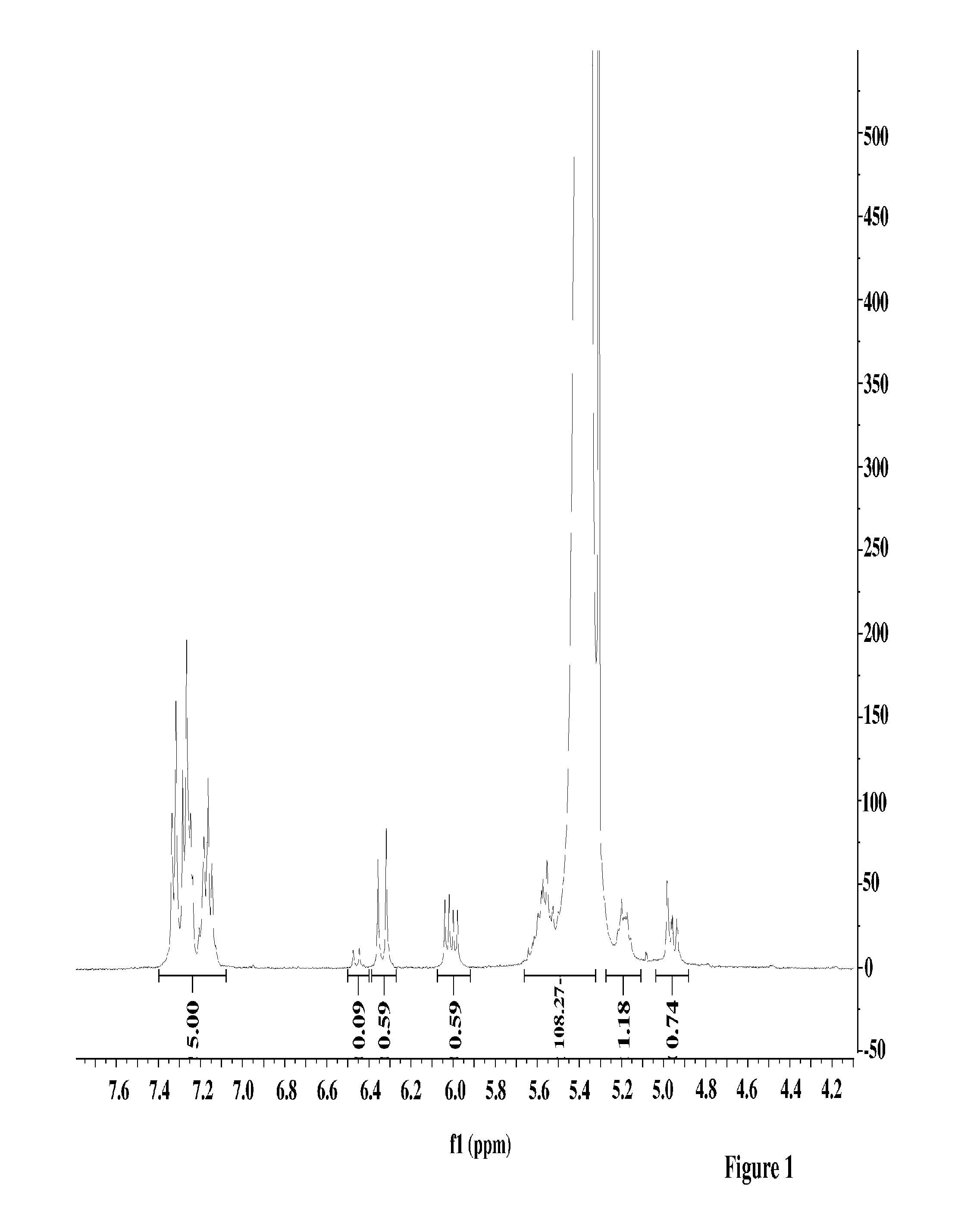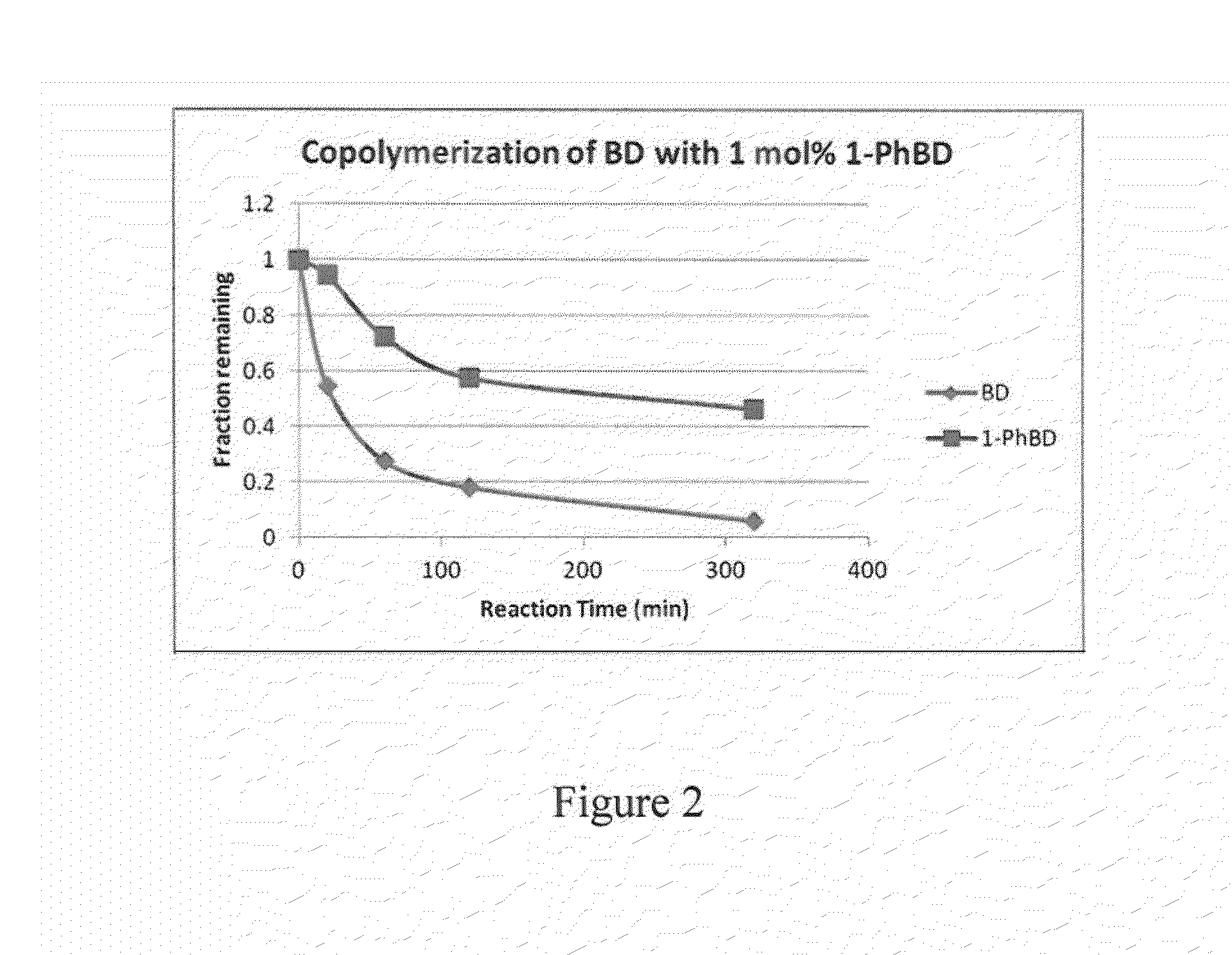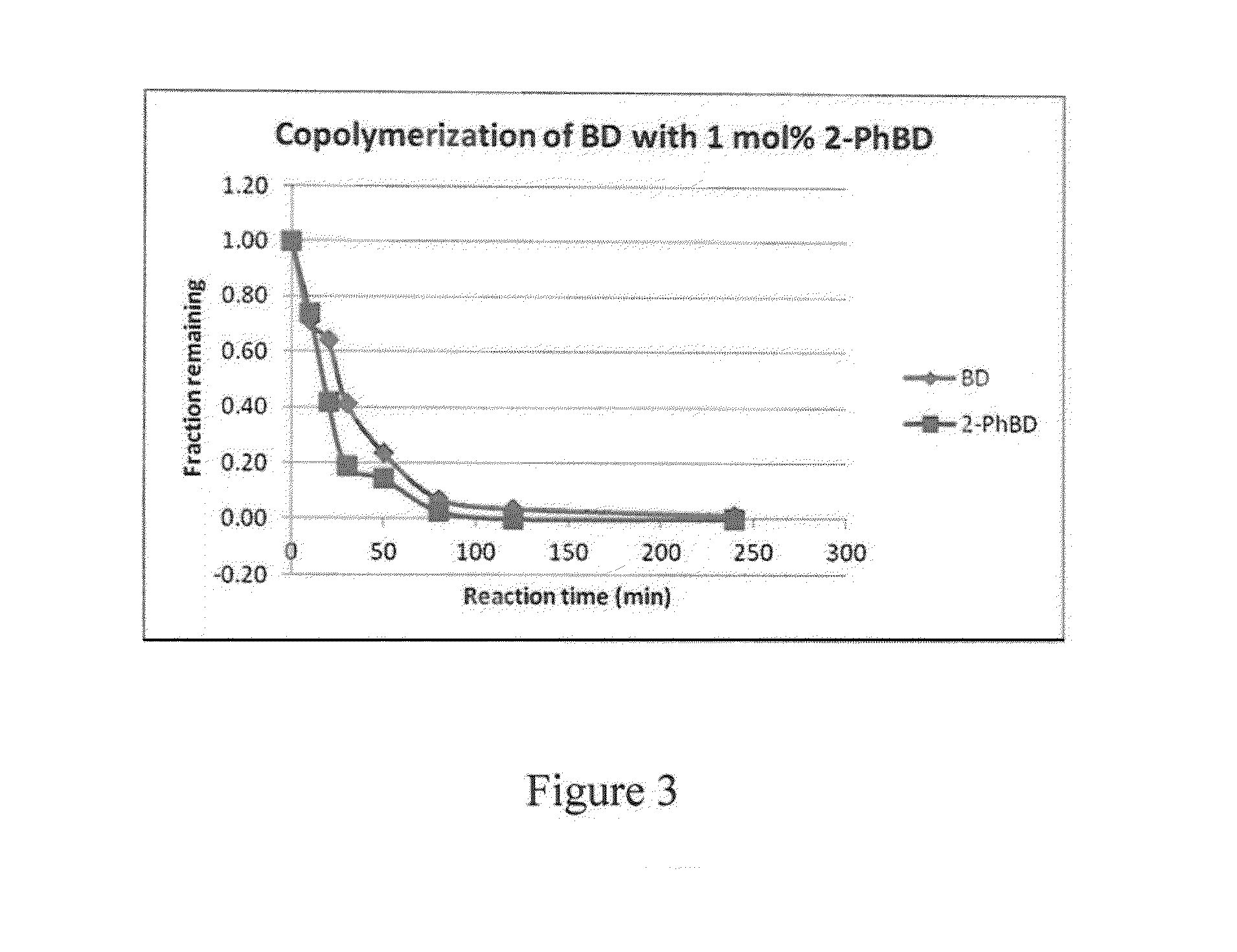High cis diene/phenylbutadiene copolymers prepared using a Ziegler/Natta neodymium catalyst
a phenylbutadiene and catalyst technology, applied in the field of tire polymer and compound, can solve the problems of poor wet traction performance, poor rolling resistance, and no polymer that combines the major aspects of these two
- Summary
- Abstract
- Description
- Claims
- Application Information
AI Technical Summary
Benefits of technology
Problems solved by technology
Method used
Image
Examples
example 1
[0068]In this example, the synthesis of 1-phenylbutadiene is illustrated (Nakao, Y.; Idei, H.; Kanyiva, K. S.; Hiyama, T. J. Am Chem Soc. 2009, 131, 5070.)
[0069]Under a nitrogen atmosphere, methyltriphenylphosphonium bromide (16.6 g, 0.0465 mol) was suspended in 150 mL of anhydrous tetrahydrofuran in a 500-mL round bottom flask equipped with a gas inlet. The mixture was cooled to 0° C. and n-butyl lithium (31.5 mL, 1.6 M solution in hexanes, 0.051 mol) was added to it via cannula over a period of 5 minutes. The mixture became bright yellow / orange and homogeneous. After 45 minutes, trans-cinnamaldehyde (5.125 g, 0.0388 mol) was added to the solution dropwise via syringe. Pale solids formed immediately. After stirring 2 h at 0° C., 100 mL of hexane and 20 g of silica gel were added to the mixture, and the solids were removed by vacuum filtration and washed with hexane. The filtrate was concentrated by rotary evaporation to afford a yellow / orange oil. A colorless liquid was distilled f...
example 2
[0070]In this example, the preparation of phenylbutadiene / butadiene copolymers is illustrated.
[0071]40 mL of 15% butadiene solution in hexanes was transferred to a 4-oz bottle under nitrogen atmosphere. A solution of 1-phenylbutadiene from Example 1 (48 mg, 1.2 weight % relative to butadiene) dissolved in 0.5 mL anhydrous hexanes was added to the bottle, followed by 0.8 mL of 0.1 M TIBA solution in hexanes. Preformed neodymium catalyst solution was added to the mixture (0.42 mL of 0.0191 M 1 / 25 / 2.5 Nd Versatate / TIBA / DEAC), and the bottle was heated to 65° C. for 1 h. After 1 h, 0.5 mL of a 10% BHT / isopropanol solution was added to terminate the polymerization, and the resulting mixture was dried overnight in air to afford the expected polymer in 90% yield. The polymer was determined to have a Mn of 162,000 and a PDI of 2.5. The presence of aryl functional groups in the polymer was confirmed by 1H NMR spectroscopy and GPC (UV detector).
[0072]Subsequent polymerizations were done using...
PUM
| Property | Measurement | Unit |
|---|---|---|
| temperatures | aaaaa | aaaaa |
| temperatures | aaaaa | aaaaa |
| weight percent | aaaaa | aaaaa |
Abstract
Description
Claims
Application Information
 Login to View More
Login to View More - R&D
- Intellectual Property
- Life Sciences
- Materials
- Tech Scout
- Unparalleled Data Quality
- Higher Quality Content
- 60% Fewer Hallucinations
Browse by: Latest US Patents, China's latest patents, Technical Efficacy Thesaurus, Application Domain, Technology Topic, Popular Technical Reports.
© 2025 PatSnap. All rights reserved.Legal|Privacy policy|Modern Slavery Act Transparency Statement|Sitemap|About US| Contact US: help@patsnap.com



